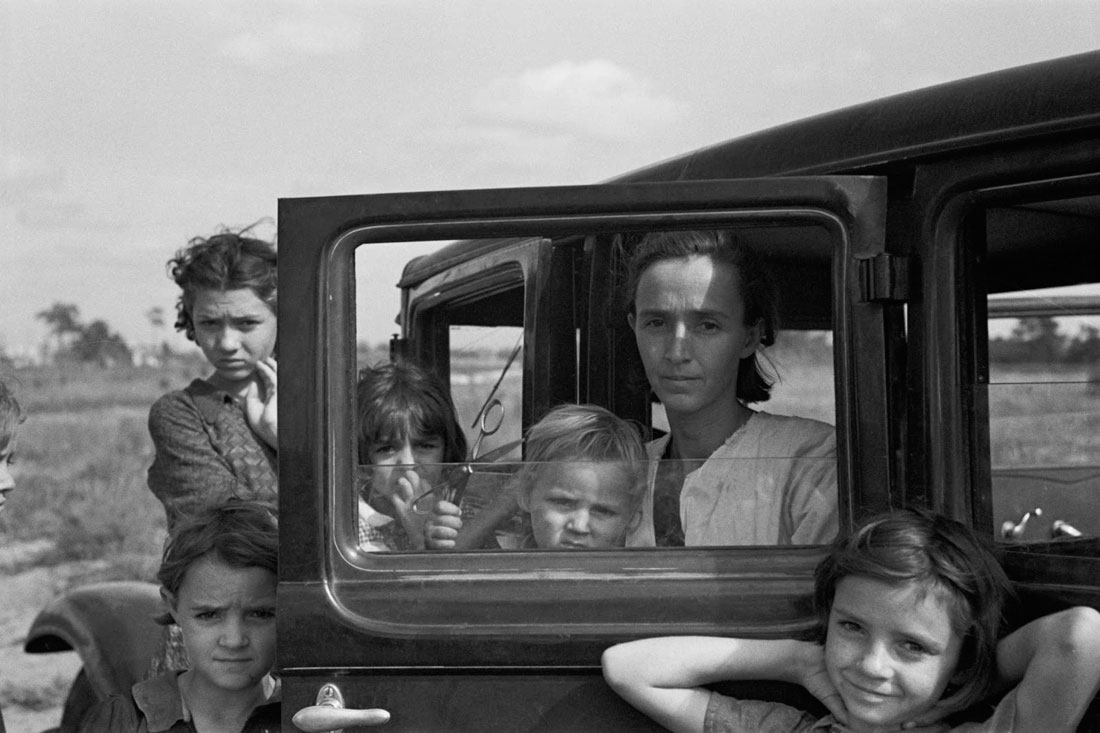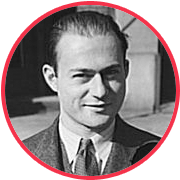
On the Shelf: “Photojournalism” by Arthur Rothstein
Photojournalism written by Arthur Rothstein opens the new “On the Shelf” rubric, which includes the most interesting fragments of rare books dedicated to photojournalism and visual culture.

How Did Photo Stories Appear in Media
The modern application of picture story started in 1925, when Garner Cowles and his brother John Cowles became interested in a new technique for the scientific measurement of reader interest. This technique had been developed by researcher George Gallup who was, at that time, a graduate student of psychology and an instructor in the Journalism School at the University of Iowa.
Gallup’s measuring technique was first tested on the readers of the Cowles’ Des Moines Register and Tribune. It showed that pictures ranked high in reader interest and that related pictures ranked even higher. These findings led to experiments in picture stories and with stories combining pictures and text. Most of these experiments were conducted in the Sunday Register rotogravure section, which soon acquired a national reputation for its handling of sequence and related picture stories. Publishers and editors throughout the country watched the experiments with mixed feelings, but whatever sceptics there may have been were soon convinced by the evidence from the Register’s circulation department. As the picture narratives were more skilfully handled and published at greater length, the Sunday Register’s circulation increased by 50 percent.
{“img”:”/wp-content/uploads/2015/08/BOOKSCANS_06.jpg”, “text”:”What is a teacher? picture story from Look magazine, Feb. 1956″},
{“img”:”/wp-content/uploads/2015/08/BOOKSCANS_07.jpg”, “text”:”What is a teacher? picture story from Look magazine, Feb. 1956″},
{“img”:”/wp-content/uploads/2015/08/BOOKSCANS_08.jpg”, “text”:”What is a teacher? picture story from Look magazine, Feb. 1956″},
{“img”:”/wp-content/uploads/2015/08/BOOKSCANS_09.jpg”, “text”:”What is a teacher? picture story from Look magazine, Feb. 1956″}
The great success of these experiments with picture language eventually started Gardner and John Cowles thinking about a national magazine utilizing the same technique. From 1933 on, they were actively preparing a picture language magazine. A handful of people selected from the Register and Tribune experimented on all kinds of layouts and related stories, reworking the dummy many times before Look finally made its appearance in January 1937.
In November 1936, Life magazine, dedicated to presenting the news in pictures, appeared. Life also used related picture combined with text to create the photo-essay. Both picture magazines developed enormous readerships and became the most influential users of photography in the world.
What Photojournalist Can and Can’t Do
A person viewing a good news photograph should have a feeling that he is seeing reality. He is never conscious of the photographer or his camera.
While on the job, the news photographer is expected to have patience, tact and good judgment. He must be calm and cool under pressure and diplomatic with people. His attitude towards people and events must be observant, yet objective and impartial. He must never get emotionally involved in the situation he photographs. In order to tell the story properly it is often necessary for the news photographer to direct people and to control their actions. This direction may take the form of asking a person to look at the camera, posing a large group, or re-enacting the scene.
The re-enactment of a news event is a problem for every photographer’s conscience. It can be resolved only when the photographer honestly believes that his directions are creating a true picture of what actually happened. Direction by the photographer supposes a conception of what the final print will be like. It should add to the realism of each picture by coordinating the events or subjects before the camera to make the visual impact more effective. It has its greatest value when its processes are least discernible.
{“img”:”/wp-content/uploads/2015/08/BOOKSCANS_01.jpg”, “text”:””}
{“img”:”/wp-content/uploads/2015/08/BOOKSCANS_02.jpg”, “text”:””}
{“img”:”/wp-content/uploads/2015/08/BOOKSCANS_03.jpg”, “text”:””}
{“img”:”/wp-content/uploads/2015/08/BOOKSCANS_04.jpg”, “text”:””}
{“img”:”/wp-content/uploads/2015/08/BOOKSCANS_005.jpg”, “text”:””}
There is always a problem of “should the subject look at the lens?” It requires great ingenuity to pose a group so that prominence is given to the right people. One solution is to allow only pretty girls and politicians to look at the camera!
Who Connected Photography and Journalism
Today’s photojournalist is a product of evolution in photography, a process which started in 1839 when Daguerre made public the details of his method. The use of the daguerreotype for portraiture established the medium as the superb means of creating a likeness. The portrait painter was put out of business and the photographer took his place. An outstanding example of the early effectiveness of the photograph as an accurate method was Matthew B. Brady’s portrait of Abraham Lincoln. When widely reproduced and circulated prior to the presidential election of 1860, Brady’s photograph helped dispel the notion that Lincoln was a rough and uncouth backwoods character.
The serious, thoughtful and dignified appearance of Lincoln in the portrait, plus its extensive distribution, caused Lincoln to give Brady credit for helping him become President.
{“img”:”/wp-content/uploads/2015/07/BOOK_01.jpg”, “text”:”Portrait of Abraham Lincoln, Mathew Brady, 1860 / mathewbrady.com”}
{“img”:”/wp-content/uploads/2015/07/BOOK_05.jpg”, “text”:”Pine Cottage, Civil War soldiers winter quarters. Mathew Brady, 1863(?) / Library of Congress”}
{“img”:”/wp-content/uploads/2015/07/BOOK_06.jpg”, “text”:”The Wounded Zouave. Mathew Brady, 1865(?) / Library of Congress”}
{“img”:”/wp-content/uploads/2015/07/BOOK_07.jpg”, “text”:”Inflation of the Intrepid, a hydrogen gas balloon, used by the Union Army Balloon Corps for aerial reconnaissance, during the Battle of Seven Pines that took place as part of the American Civil War. Mathew Brady, 1862 / Library of Congress”}
Now, almost one hundred years later, politics and photography are inseparable. The concept of the photograph as a truthful statement, the idea that the camera does not lie, has been carefully built up to the point where the photojournalist’s efforts have been used and misused in many campaigns. The importance attached to the appearance of the President of the United States in all visual media is indicated by the fact that he has an advisor to coach him on behavior before the television and newsreel cameras. The White House Press Photographers Association, representatives of newspapers and magazines, have probably one of the most specialized photo reporting jobs in that their subject is the President, his family and his activities as Chief Executive. The influence and ethics of these photographers is best shown by the unwritten law to which they adhered during the late Franklin D. Roosevelt’s administration.
The public never received the false impression that the President’s disability made it difficult for him to discharge the duties of his exacting office.
{“img”:”/wp-content/uploads/2015/07/BOOK_08.jpg”, “text”:”Basque Sheepherder, Dangberg Ranch, Douglas County NV. Arthur Rothstein, 1940 / arthurrothsteinarchive.com”}
{“img”:”/wp-content/uploads/2015/07/BOOK_09.jpg”, “text”:”Bulldogging, Rodeo, Miles City, MT. Arthur Rothstein, 1939 / arthurrothsteinarchive.com”}
{“img”:”/wp-content/uploads/2015/07/BOOK_10.jpg”, “text”:”Vernon Evans From South Dakota, Arthur Rothstein, 1936 / arthurrothsteinarchive.com”}
{“img”:”/wp-content/uploads/2015/07/BOOK_11.jpg”, “text”:”Apple Seller, Nicholson Hollow, VA. Arthur Rothstein, 1935 / arthurrothsteinarchive.com”}
{“img”:”/wp-content/uploads/2015/07/BOOK_12.jpg”, “text”:”Aletia Bendolph, Gee’s Bend, Alabama. Arthur Rothstein, 1937 / arthurrothsteinarchive.com”}
{“img”:”/wp-content/uploads/2015/07/BOOK_13.jpg”, “text”:”Post Office Porch, Nethers, VA. Arthur Rothstein, 1935 / arthurrothsteinarchive.com”}
{“img”:”/wp-content/uploads/2015/07/BOOK_14.jpg”, “text”:”Shoeshine Man, NYC. Arthur Rothstein, 1937 / arthurrothsteinarchive.com”}
{“img”:”/wp-content/uploads/2015/07/BOOK_15.jpg”, “text”:”Parade, Butte, Montana. Arthur Rothstein, 1949 / arthurrothsteinarchive.com”}
{“img”:”/wp-content/uploads/2015/07/BOOK_16.jpg”, “text”:”Boys reinacting Washington Crossing the Delaware. Arthur Rothstein, 1940 / arthurrothsteinarchive.com”}
{“img”:”/wp-content/uploads/2015/07/BOOK_17.jpg”, “text”:”Cowboys singing after a day’s work at the roundup, Quarter Circle U Ranch, Near Birney, MT. Arthur Rothstein, 1939 / arthurrothsteinarchive.com”}
{“img”:”/wp-content/uploads/2015/07/BOOK_18.jpg”, “text”:”Farmer, Lancaster County, Nebraska. Arthur Rothstein, 1936 / arthurrothsteinarchive.com”}
New and best




